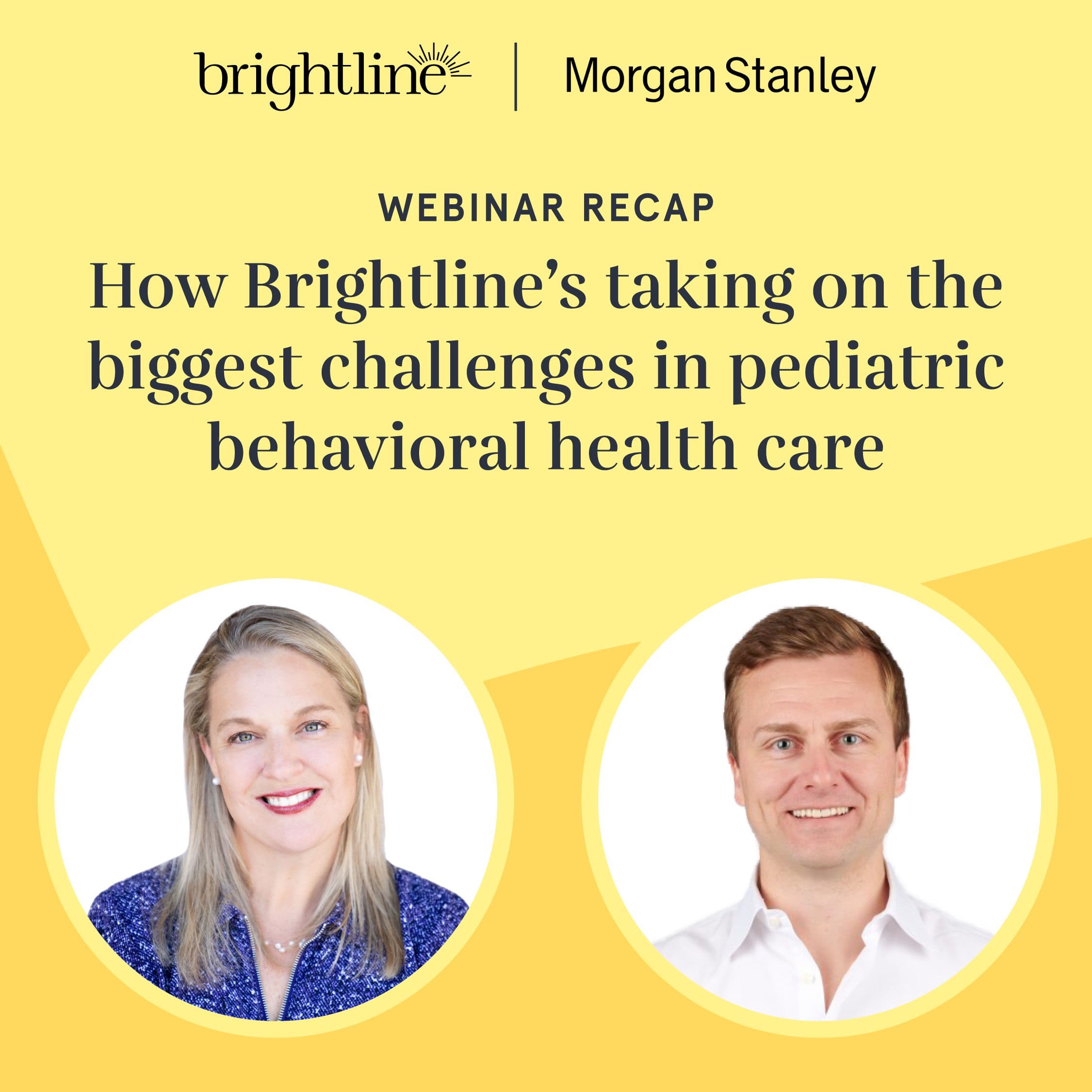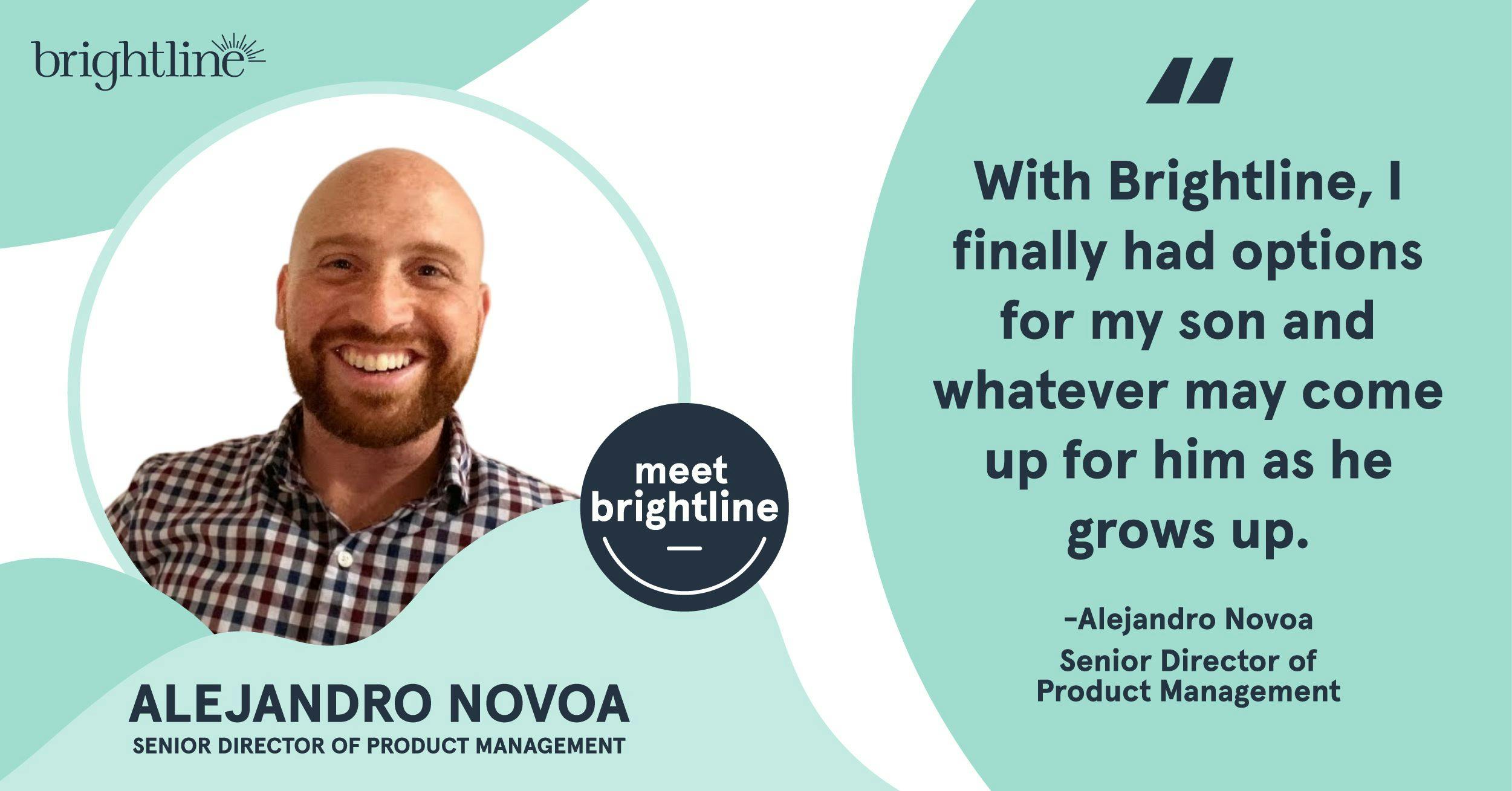
How Brightline’s taking on the biggest challenges in pediatric behavioral health care — Webinar recap

By Brightline team, Oct 28, 2021
What is normal for a child my kid’s age? What’s typical? These are common questions asked by many first-time parents — but for some, clear answers are hard to come by. Children can display what seem to be behavioral health concerns at ages much younger than when clinical diagnoses are typical. When this happens, parents and caregivers may feel helpless, anxious, or fearful.
That’s what Alejandro Novoa, Brightline’s senior director of product management, has experienced with his young son Theo. In this blog post, Alejandro gets candid about the challenges he and his wife have had figuring out the right course of care for their bright and energetic 22-month-old son — and shares his passion for his work helping to create solutions for families like his.
My son, Theo, is an excellent runner.
In fact, he’s such an excellent runner that, as his father, I’m not quite sure whether I should be proud or worried. I’m proud my son is an active and energetic child, and I’m simultaneously worried that his need for constant movement is cause for concern.
In most ways, Theo is a healthy, smart kid. He’s meeting all his growth and motor skill milestones. He’s already multilingual, speaking Spanish, English, and Mandarin, the last of these thanks to an immersion school. But Theo also has an unusual amount of energy. He runs twice as much as his peers do. He basically doesn’t sit down.
Could Theo have ADHD? My wife and I have wondered this, but won’t be getting an answer anytime soon: Theo is under two years old, and ADHD isn’t clinically diagnosed until the age of four. So in the meantime, my wife and I have come up with our own interventions, like taking him to the park twice a day — once before daycare, once after — and letting him run to his heart’s content.
My wife and I are first-time parents, with no prior children to compare Theo against. As a result, we really don’t know what “normal” looks like. Our families are on the other side of the country, so we also don’t have our nieces or nephews in our daily lives to understand what is normal for kids at certain ages. It’s all somewhat of a guessing game for us, though we instinctively know some of Theo’s behaviors aren’t typical.
Theo’s high energy isn’t the only thing we’ve been surprised by. When he was younger, Theo used to throw tantrums. Not the normal, expected tantrums of young children, but truly epic tantrums where he’d throw himself on the floor. We brought this concern to our pediatrician, who bluntly told us, “Kids cannot throw tantrums under the age of two.”
Theo was only 14 months old at the time, but his emotional outbursts sure looked like tantrums to us.
After our pediatrician dismissed our concerns, I did the same thing every other desperate parent does when they want answers — I went to Google. But I didn’t find much, other than a 374-page book titled How to Talk So Kids Will Listen & Listen So Kids Will Talk, which I bought. By the time I finished reading it though, Theo had already moved on to a new phase that raised a different set of questions.
The silver lining of these experiences is that they sparked my interest in pediatric behavioral health. So for me, Brightline couldn’t have come into my life at a better time. Theo’s behavioral issues were happening right around the time I began interviewing with Brightline, and I immediately felt a sense of comfort. I felt this was where I was supposed to be. With Brightline, I finally had options for my son and whatever may come up for him as he grows up.
Theo’s now enrolled in a soccer program, which is helping us get a sense of his ability to follow instructions compared to other kids his age. As of now, following instructions is a challenge for Theo, so we’re softly monitoring that behavior. We want to set him up to eventually prosper in a world that (unfortunately) requires long periods of sitting down and following instructions.
The ironic part of our experience with Theo is that 10 years ago, I wouldn’t have entertained a conversation about therapy. Growing up in the Hispanic culture, I thought therapy was a last resort and came with a social stigma.
However, working in healthcare for the past 10 years has changed that perception for me. When I became stressed while expecting our first child, I sought therapy and found it extremely helpful. Based on my own experience, I understand the value of early intervention. That’s why with Theo, it feels very risky to wait for a problem to fully manifest itself before taking action — when perhaps small behavioral changes early on could help. I’m proud we’re not turning a blind eye to his behaviors, and optimistic for his future because of it.
As a member of the Brightline team, I value how we train parents and caregivers on how to support their kids and what signs of progress to look for. My interest has always been in virtual healthcare and helping individuals access care, and I’m proud to be a part of a company whose mission is aligned with mine — both professionally and personally.
Alejandro Novoa is Brightline’s senior director of product management. The proud father of Theo, Alejandro has more than a decade of hands-on product development experience working with some of the most disruptive healthcare technology companies in the country.